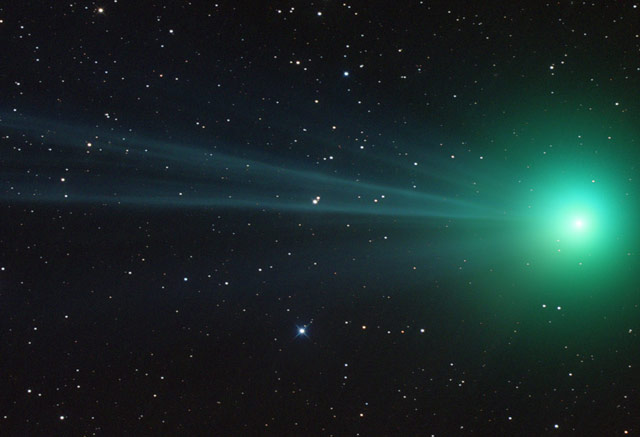Hi everybody
Here's the latest article from the Astronomy site at BellaOnline.com.
Beagle 2 – Lost and Found
On Christmas day 2003 a British-European space probe called Beagle 2 was lost on Mars and never heard from. It was not only small, but possibly broken and scattered while attempting to land. Since Mars is quite big, it took eleven years to find the little lander, and there were some surprises.
http://www.bellaonline.com/articles/art300714.asp
*In memoriam*
It was 48 years ago - January 27,1967 - that a fire on the launchpad claimed the lives of the Apollo 1 astronauts, Gus Grissom, Roger Chaffee and Ed White. Sparks from an arcing wire ignited the oxygen-rich atmosphere and filled the cabin with flames within ten seconds. Grissom had written his memoirs after the Gemini program and concluded that “soon or later, inevitably, we're going to . . . lose somebody. I hope this never happens. . . but if it does, I hope the American people won't feel it's too high a price to pay for our space program.” At least these three deaths led to substantial redesign of the Apollo command module to make it safer, which probably saved other lives later. There is a plaque on the launchpad where they died: AD ASTRA PER ASPERA means a rough road to the stars.
*International Year of Light*
The United Nations has declared 2015 as the International Year of Light (IYL). Light is so important to us in so many ways, it's hard to know where to begin. But since I write about astronomy, that's probably a good place for me. In celebration of IYL, NASA's Chandra X-ray Center is releasing a set of astronomical images that combine data from different wavelengths of light. Here is the first one: an image of a supernova remnant in the Large Magellanic Cloud, a satellite galaxy of the Milky Way. The blue is X-ray data showing gas heated to millions of degrees. The red at the outer edge of the explosion and the stars are in visible light from the Hubble Space Telescope. http://www.pinterest.com/pin/250090585533895000/
*Kepler and K2*
The planet Kepler-186f was the first Earth-sized planet discovered in its star's habitable zone. This was one of my Top Ten Astronomy Stories 2014. http://www.bellaonline.com/articles/art300544.asp The star Kepler-186 is a red dwarf. Its spectrum is different to that of our Sun, so if there were photosynthesizing life on the planet, it might well use redder pigments to trap its star's energy. The Jet Propulsion Laboratory (JPL) has made a “travel poster” for it: http://www.pinterest.com/pin/250090585533795057/
The new Kepler mission K2 has discovered its first planetary system. University of Arizona researchers found three planets orbiting Star EPIC 201367065 (not exactly a catchy name!). The largest of the three is only twice the size of the Earth. The outermost planet orbits in the star's habitable zone.
*Anniversary – Johannes Hevelius*
Johannes Hevelius was the last great observer to produce a substantial body of work from naked-eye observations. He was born on January 28, 1611 and died on his 76th birthday. Among his many accomplishments was a star atlas which his wife Elisabetha (also an astronomer) completed and published after his death. You can find out more about Hevelius's life here: http://www.bellaonline.com/articles/art179513.asp There is a monument to Hevelius in his home city of Gdansk (Danzig) in Poland: http://www.pinterest.com/pin/250090585531850084/
Please visit astronomy.bellaonline.com for even more great content about Astronomy.
I hope to hear from you sometime soon, either in the forum or in response to this email message. I welcome your feedback!
Do pass this message along to family and friends who might also be interested. Remember it's free and without obligation.
I wish you clear skies.
Mona Evans, Astronomy Editor
http://astronomy.bellaonline.com
One of hundreds of sites at BellaOnline.com
.
astronomy Newsletter








